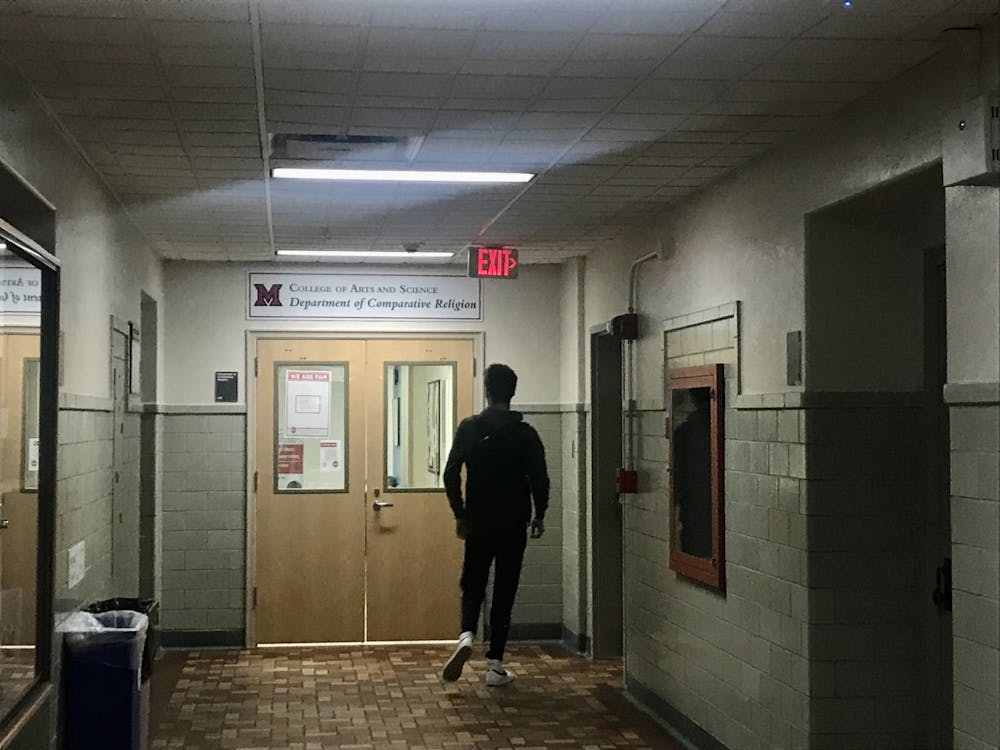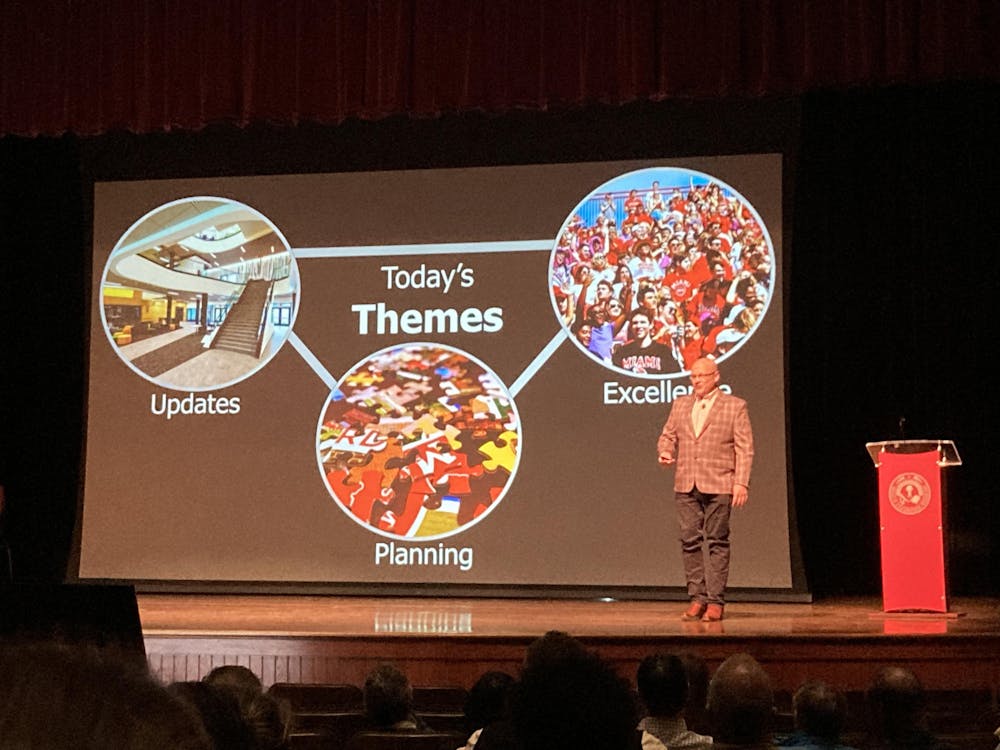At Miami University, the number of Pell Grants awarded to low-income students has been decreasing steadily over the years, yet its graduation gap between students of different socioeconomic backgrounds is below the national average.
The Basic Education Opportunity Grant, now called the Pell Grant, was created in 1972. The six-year grant serves as federal support for low-income undergraduates whose expected family contribution is below $6,000.
A 2015 report by The Education Trust revealed the national average graduation gap per institution was six and a half percent. Over the last six years, around 80 percent of Miami students graduated on time, said Brent Shock, assistant vice president for enrollment and management at Miami. However, Pell Grant students graduated at a rate of a little less than 75 percent, meaning Miami's graduation gap falls near four percent.
Shock, a first-generation Pell Grant recipient when he was a student at Miami, keeps in mind the challenges he faced in reaching his 1992 graduation when helping current students with their financial aid.
"I understand something about paying for college, specifically paying for Miami," Shock said. "I remember feeling stunned about what I saw at Miami in terms of wealth. So, part of our mission as a public university is to be as affordable as possible to Ohio's lowest income families."
Yet the amount of money allocated for Pell Grants at Miami has been steadily decreasing. In 2016, over $15 million went to Pell Grant awards. However, this represents a 32 percent drop in funds over a five-year span from 2011 to 2016.
As a result, the number of Miami students receiving Pell Grants is also dropping. Miami provides around 14 percent of its current low-income students with Pell Grants, a low amount compared to other four-year Ohio public universities with similar student population sizes. Schools such as Wright State, Cleveland State and Bowling Green all provide upwards of 30 percent of their students with Pell Grants, according to the U.S. Department of Education.
So, how can Miami's graduation gap be below the national average when financial resources are depleting each year? Kim Ernsting, director of student success at Miami, credits this accomplishment to Miami's new Student Success Center.
The Student Success Center was created three years ago to help students better navigate the financial, social, and academic challenges of college. The center primarily focuses on outreach programs that help students meet basic living needs so their finances can go towards tuition.
"Sometimes students' survival needs are really marginal, and it takes so much time and energy to focus on," Ernsting said. "Sometimes low-income students have so many other things to worry about that other students may not. We're wanting to see what can do to alleviate some of that. It tries to make at least a dent."
One program touches on lack of housing, which Ernsting says is more common than people think. In the past, there have been circumstances of students couchsurfing when housing finances fall through.
The Success Center partners with both the Oxford Community Needs Committee and the Oxford Homeless Coalition. These relationships allow faculty and staff to connect with students in need of a place to live, often finding them temporary housing in on-campus dorms or with an off-campus host family until a more permanent solution can be reached.
Enjoy what you're reading?
Signup for our newsletter
Other programs address students facing food insecurity and those who do not have access to available technology. Ernsting says these programs are the key to helping low-income students reach graduation when financial aid is lacking.
However, circumstances contributing to graduation gaps often begin long before college. Alan Mabe, chief academic officer and vice president for academic affairs for the Association of Public and Land-Grant Universities (APLU), says that many low-income students enter college at a disadvantage due to a previous lack of educational opportunities.
APLU is an advocacy organization for over 200 top public research universities in the country. Mabe works to represent and advocate for higher education policies that benefit students, including an increase in Pell Grant funding. But there is only so much that can be done at the college level.
"I'm not one to place the blame on some other entity of things, but certainly high schools vary in their quality, resources and ability to prepare people for college," Mabe said. "If you can't afford tutoring, you're stuck with what you're getting in the classroom, and that's it. So there's a huge differential in terms of students coming to college."
Mabe believes campuses have promising programs for low-income students who did not have as many educational opportunities in high school. However, many programs, like those at Miami, are not mandatory, meaning students have to seek out help on their own.
In the wake of reduced federal funds and poor high school education, college programs providing resources for low-income students are necessary. However, only as time goes on and more data is collected will it become apparent if these new Student Success programs are truly responsible for Miami's lower-than-average graduation gap.
sonderk@miamioh.edu



